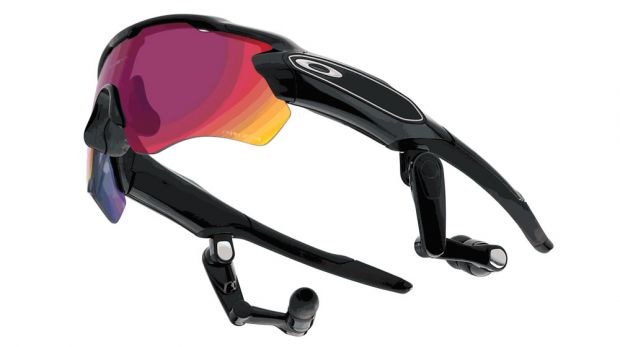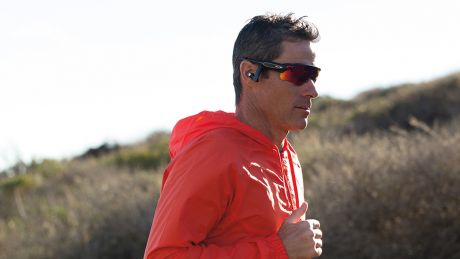You can trust Coach
Fitness technology grows more advanced by the day, and where consumers were once satisfied by a step-counting wrist strap, they now demand far more in-depth stats. As a pair of sunglasses you can chat to as it coaches you through runs and cycles, the Oakley Radar Pace aims to fulfil that demand in an entirely novel way.
The Radar Pace coaches you via the in-built headphones, and you can talk back to it while on the go, asking how far you’ve gone, or how much you’ve climbed. The glasses also design your workout plan, whether that’s for a specific event, or just an improvement target such as increasing your speed or endurance. The plans are six to 14 weeks long, and include different kinds of training, like speed and endurance sessions or hill workouts, all tailored to help you hit your goal.
The biggest test of all fitness tech is whether you’ll actually benefit from it, and that’s important to ascertain of a pair of talking sunglasses, as wearing the Radar Pace is more of a commitment than slipping on a wrist tracker. Coach put them to the test with a six-week 5km training plan with the aim of improving a Parkrun PB.

The Radar Pace plans are based on your existing fitness level and targets, and set out the amount and type of exercise you’ll have to do. For Coach the plan involved five runs a week, mostly short but involving hills or speed sections, with longer runs on a Sunday.
While Coach didn’t have much to say to the Radar Pace, the advice coming from the glasses proved unexpectedly useful, most notably when we were sternly told to shorten strides on uphills and immediately found the going faster and easier.
The plan was excellent, pitched exactly right so you can complete all the runs without killing yourself. Coach’s 5km time also improved quickly throughout the plan, although that might simply be down to doing more running than ever before.
Once over some initial self-consciousness, wearing the sunglasses in cloudy Haringey was not as big an issue as you might expect. It turns out no one else cares what you look like when you’re running. That said, it would still have been handy to be able to also track workouts via the app without wearing the glasses, especially for treadmill runs, when Coach decided wearing sunglasses would be too much.
The Radar Pace also comes with clear lenses, so you can goggle up for outdoor night runs. Wearing sunglasses for every run is not going to be for everyone, and it’s easy to imagine the Radar Pace being more of a success in sunny California than cloudy Clapham.
However, if you embrace the Radar Pace, it’s far more than a set of novelty sunglasses, it’s a genuinely useful bit of kit. The price is, however, very high (£400), which means you need to ensure you’re really going to benefit from the Radar Pace. Beginners would be better served with the cheap or free apps and trackers available, while experts might not learn much from the coaching. It’s probably the best fit for those in between, running or cycling not just for fitness but also to get better at them ahead of events.
£400, buy on uk.oakley.com

Nick Harris-Fry is a journalist who has been covering health and fitness since 2015. Nick is an avid runner, covering 70-110km a week, which gives him ample opportunity to test a wide range of running shoes and running gear. He is also the chief tester for fitness trackers and running watches, treadmills and exercise bikes, and workout headphones.

